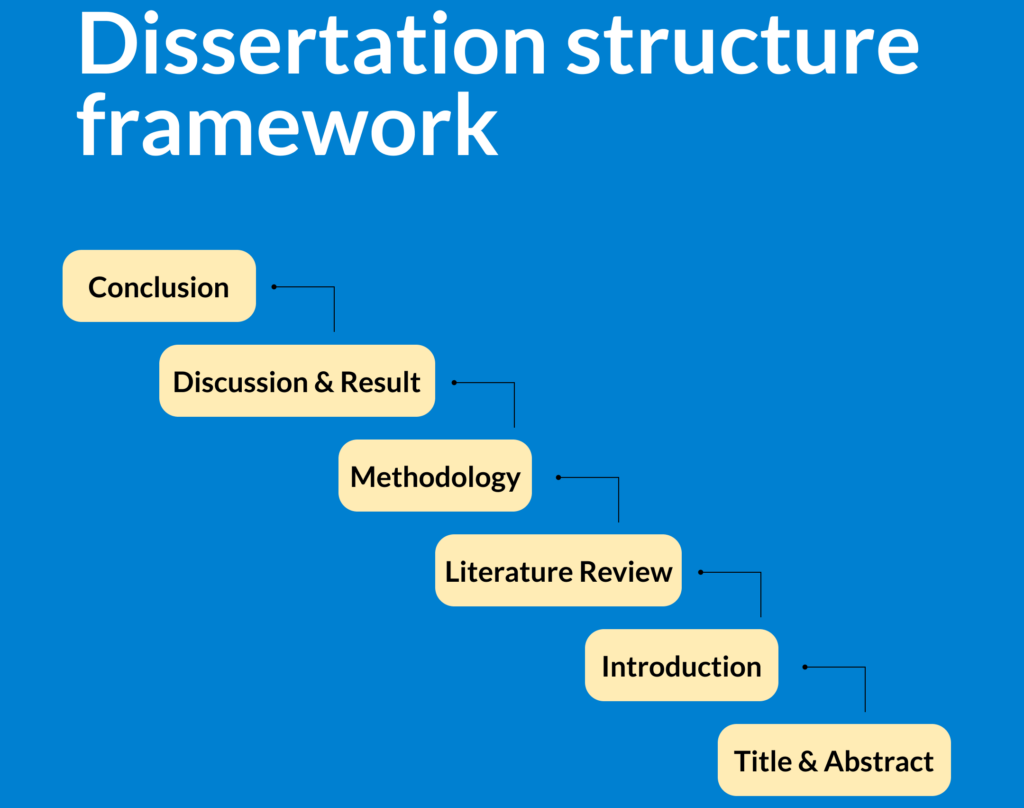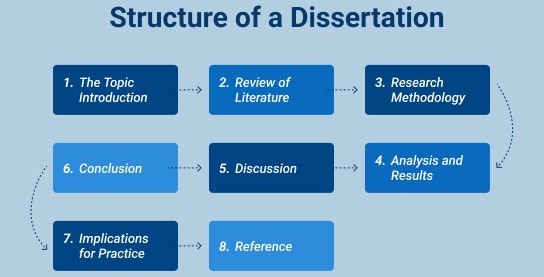The dissertation, the pinnacle of academic achievement, often looms as a daunting challenge. It's a complex, multi-faceted endeavor that requires meticulous planning, robust research, and a clear, compelling narrative. While the content itself is crucial, the dissertation structure serves as the scaffolding, providing the foundation for a coherent and impactful argument. A well-defined dissertation structure allows you to present your findings in a logical and digestible manner, ensuring your research reaches its full potential.
Crafting a Winning Dissertation Structure: A Step-by-Step Guide
1. Understand Your Dissertation Structure's Importance:
The dissertation structure is not just a formality. It's a roadmap that guides both you, the researcher, and your readers through the complexities of your work. A well-structured dissertation ensures clarity, consistency, and flow, making it easier for your readers to understand your arguments and appreciate the significance of your findings.
2. The Foundation: Defining Your Research Question and Thesis Statement:
The foundation of your dissertation structure lies in your research question and thesis statement. These form the central arguments you will explore and defend throughout your work.
- Research Question: This is the core question your dissertation aims to answer. It should be focused, specific, and relevant to your field of study.
- Thesis Statement: This is your central argument, a succinct statement outlining your position on the research question. It acts as the guiding principle for your entire dissertation.
3. Building the Framework: The Dissertation Chapters:
The typical dissertation structure involves a consistent set of chapters, each with a specific purpose in building your overall argument.
Introduction
- Hook the reader: Start with a captivating opening that introduces the topic and its significance.
- Background and literature review: Provide context by reviewing existing research and identifying gaps in knowledge.
- Research question and thesis statement: Clearly state your research question and thesis statement.
- Methodology: Briefly outline the research methods employed in your study.
- Dissertation structure: Present a roadmap of the dissertation's structure, highlighting the key chapters and their purpose.
Literature Review
- Comprehensive overview: Thoroughly review existing literature relevant to your research question.
- Critical analysis: Go beyond simply summarizing existing works; critically analyze and synthesize the findings to identify gaps, contradictions, and areas for further exploration.
- Theoretical framework: Explain the theoretical framework underpinning your research and how it informs your approach.
Methodology
- Research design: Describe the research design chosen (qualitative, quantitative, or mixed methods).
- Data collection methods: Outline the methods used to gather data (interviews, surveys, experiments, etc.).
- Data analysis techniques: Explain the methods used to analyze the collected data.
- Ethical considerations: Discuss the ethical implications of your research and how you ensured ethical conduct.
Findings
- Present your data: Clearly and systematically present the findings of your research, using tables, figures, and other visual aids to enhance clarity.
- Analysis and interpretation: Analyze and interpret the data in relation to your research question and thesis statement.
- Discussion: Discuss the significance of your findings, their implications, and potential limitations.
Chapter 5: Discussion and Conclusion
- Summary of findings: Recap your key findings and reiterate their significance.
- Discussion: Discuss the implications of your findings, highlighting their contributions to the field and potential areas for future research.
- Conclusion: Conclude with a strong statement that leaves a lasting impression on the reader.

4. The Importance of Clear and Concise Language:
The clarity and conciseness of your writing significantly impact the readability and effectiveness of your dissertation structure. Aim for a clear and straightforward style, avoiding unnecessary jargon or convoluted language.
5. Using Transitions for Flow and Coherence:
Transitions are essential to ensure a smooth flow between chapters and paragraphs. Use transitional phrases and sentences to connect ideas, guide the reader, and maintain a logical progression throughout the dissertation.
6. Structuring Your Chapters:
Each chapter within your dissertation structure should also have a well-defined internal structure.
- Introduction: Briefly introduce the chapter's topic and its relevance to the overall argument.
- Body Paragraphs: Develop your arguments in logical, well-supported paragraphs, using evidence from your research.
- Conclusion: Summarize the key points of the chapter and reiterate its significance to the overall thesis.
7. Utilizing Visuals and Formatting:
Visual aids like tables, figures, and charts can enhance the clarity and impact of your dissertation structure. Employ formatting techniques like headings, subheadings, and bullet points to break up text and improve readability.
8. Seeking Feedback and Refining Your Dissertation Structure:
The dissertation structure is not a static entity; it is an evolving framework that requires constant refinement and improvement. Seek feedback from your advisor, peers, and other experts to identify areas for improvement and enhance the overall clarity and effectiveness of your work.
9. Keeping Your Audience in Mind:
While your advisor and committee are your primary audience, remember your dissertation will potentially be accessed by a wider scholarly community. Write in a clear, accessible style, using language that is both precise and engaging.
10. The Final Touches: Editing and Proofreading:
Once you have a complete draft, dedicate time to meticulous editing and proofreading. This ensures a polished, professional presentation of your work, free from grammatical errors and typos.
Developing a stellar dissertation structure is a crucial step towards a successful and impactful dissertation. It provides the foundation for a clear, coherent, and persuasive argument that effectively communicates your research findings and their significance. By adhering to the principles outlined above, you can create a structure that empowers your research and propels you towards achieving your academic goals.
Additional Tips for Enhancing Your Dissertation Structure
- Timeline: Create a detailed timeline for completing each chapter, ensuring you meet deadlines effectively.
- Outlining: Before writing, create detailed outlines for each chapter to guide your writing process.
- Writing in Stages: Break down the writing process into manageable stages, focusing on one chapter at a time.
- Revisit and Revise: Regularly revisit and revise your work, ensuring consistency, clarity, and coherence.
- Seek Support: Don't hesitate to seek support from your advisor, peers, and writing centers for guidance and feedback.
Remember: The dissertation structure is a crucial aspect of your overall dissertation success. A well-defined structure serves as the framework for presenting your research in a compelling and impactful manner, ensuring your work is both academically sound and readily understood by your audience. By investing time and effort in developing a robust dissertation structure, you lay the foundation for a successful and rewarding dissertation experience.
Common Pitfalls to Avoid in a Dissertation Structure
A dissertation is a monumental undertaking, demanding years of dedicated research and writing. One crucial element in crafting a successful dissertation is a strong and logical dissertation structure. A well-structured dissertation not only guides the reader through your research but also ensures clarity, coherence, and persuasiveness in your arguments. However, numerous pitfalls can derail even the most meticulously planned dissertation structure. Understanding and avoiding these common pitfalls is essential for crafting a compelling and successful dissertation.
1. Lack of a Clear Thesis Statement: The thesis statement is the backbone of your dissertation, providing a concise and focused argument that guides your entire research journey. A weak or unclear thesis statement often leads to disjointed writing and a lack of direction in your dissertation structure. A clear and compelling thesis statement should be established early on and revisited throughout the writing process, ensuring that all your research and arguments support it.
2. Overly Broad Scope: Ambition is essential in academic research, but attempting to cover too much ground can lead to a dissertation that feels superficial and lacking in depth. Restricting your scope to a manageable and focused research question is crucial for maintaining a coherent dissertation structure. A clear and defined research question allows you to delve deeper into specific aspects of your topic, leading to more insightful and impactful results.
3. Ignoring the Literature Review: The literature review is not just a list of existing research; it's a critical analysis of existing scholarship on your topic. It allows you to establish the context for your research, identify gaps in existing knowledge, and articulate the significance of your contribution. A poorly crafted literature review undermines the credibility and impact of your dissertation structure. Ensure your literature review is comprehensive, relevant, and critically engages with the current scholarship in your field.
4. Neglecting the Methodology: The methodology section of your dissertation outlines the methods and procedures used to conduct your research. It provides a roadmap for your reader to understand how you collected and analyzed your data. A weak or unclear methodology section weakens the credibility and rigor of your research, hindering the effectiveness of your dissertation structure. Clearly explain your methodological choices, their limitations, and their suitability for addressing your research question.
5. Lack of Coherence in Chapters: Each chapter in your dissertation should contribute to the overall argument presented in your thesis statement. Jumping between disparate themes or failing to establish clear transitions between chapters disrupts the flow and logic of your dissertation structure. Ensure that each chapter builds upon the previous ones, furthering the overall narrative and strengthening your argument.
6. Neglecting the Conclusion: The conclusion is your opportunity to reiterate your thesis, summarize your key findings, and highlight the implications of your research. It's not just a rehashing of previous chapters, but an opportunity to synthesize your findings and offer insights into the broader significance of your research. A weak conclusion can undermine the impact of your entire dissertation.
7. Ignoring Formatting Guidelines: Adhering to formatting guidelines specific to your institution and discipline is essential for creating a professional and polished dissertation. Following citation styles, formatting rules, and page limitations ensures that your research is presented in a clear and consistent manner. Neglecting these guidelines can detract from the overall quality and credibility of your dissertation structure.
8. Procrastination: Writing a dissertation is a time-consuming endeavor that requires careful planning and consistent effort. Procrastination can lead to rushed writing, poor quality research, and a weakened dissertation structure. Break down your work into manageable tasks, set realistic deadlines, and seek support from advisors and peers.

By understanding and avoiding these common pitfalls, you can create a dissertation that is not only well-structured and logically argued but also engaging, insightful, and impactful. Remember, a strong dissertation structure is not just about organization, but about clarity, persuasiveness, and the effective communication of your research findings.
Get Customized Dissertation Writing Service
At Exemplary Dissertations, we offer professional dissertation writing service to enable you get through this challenging task seamlessly. Our service covers topic suggestion, dissertation writing, proofreading, editing, formatting and plagiarism removal. Besides, we can also assist you with writing authentic essays, case studies and research papers.